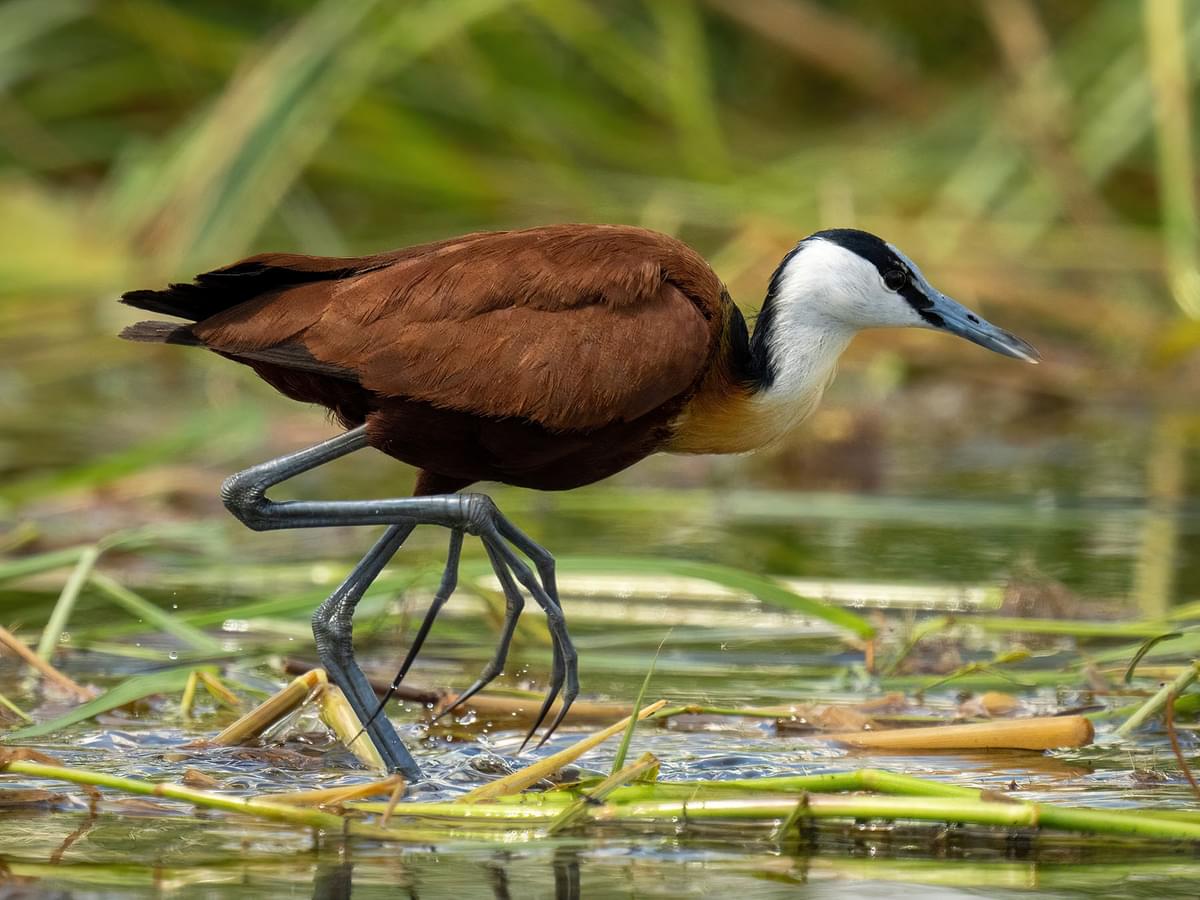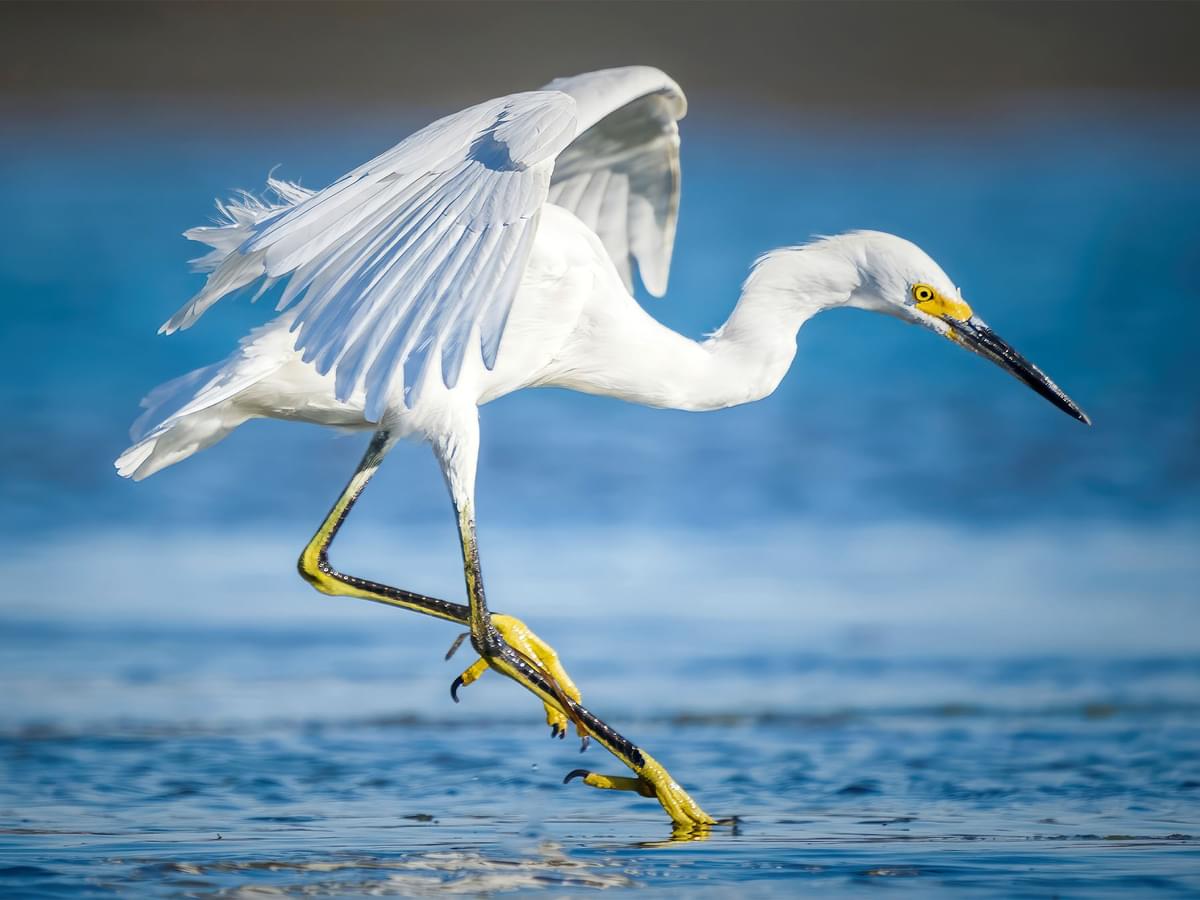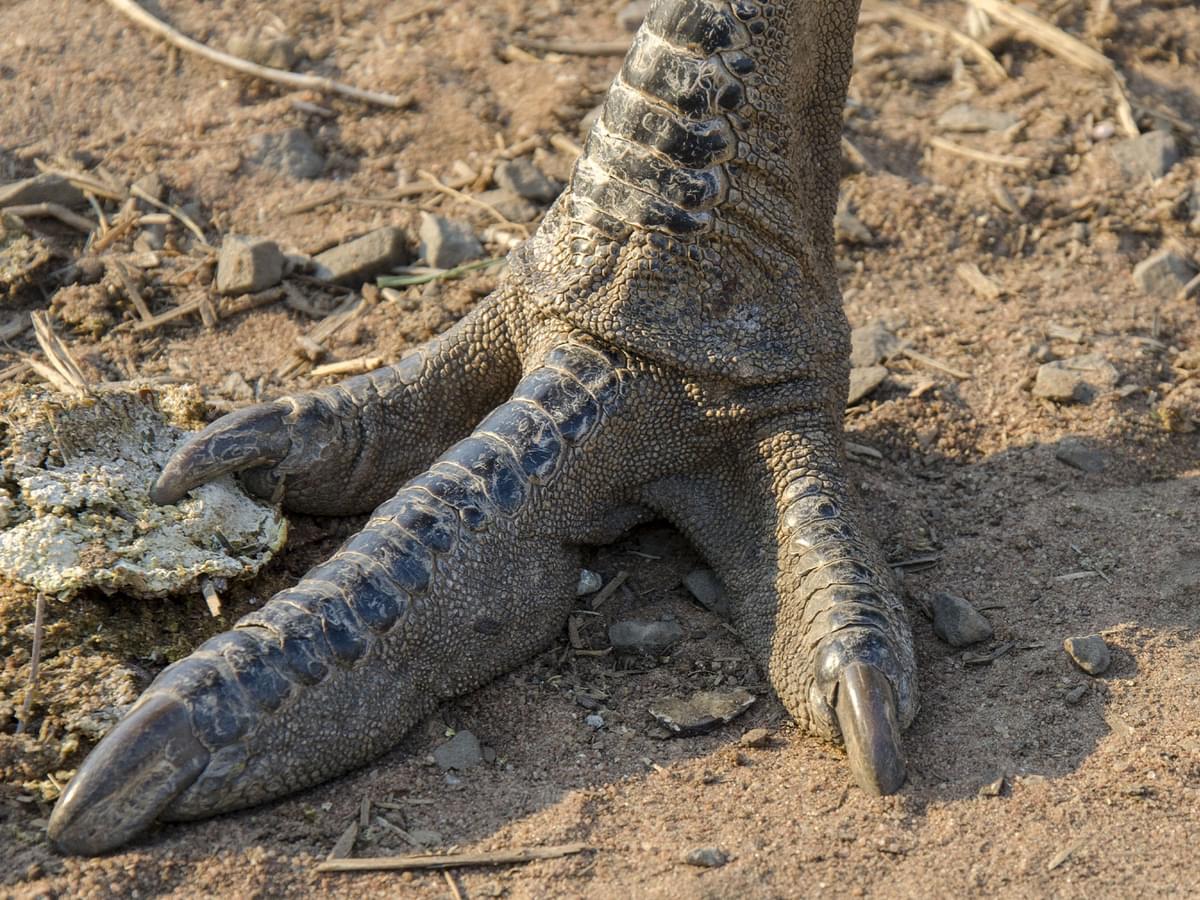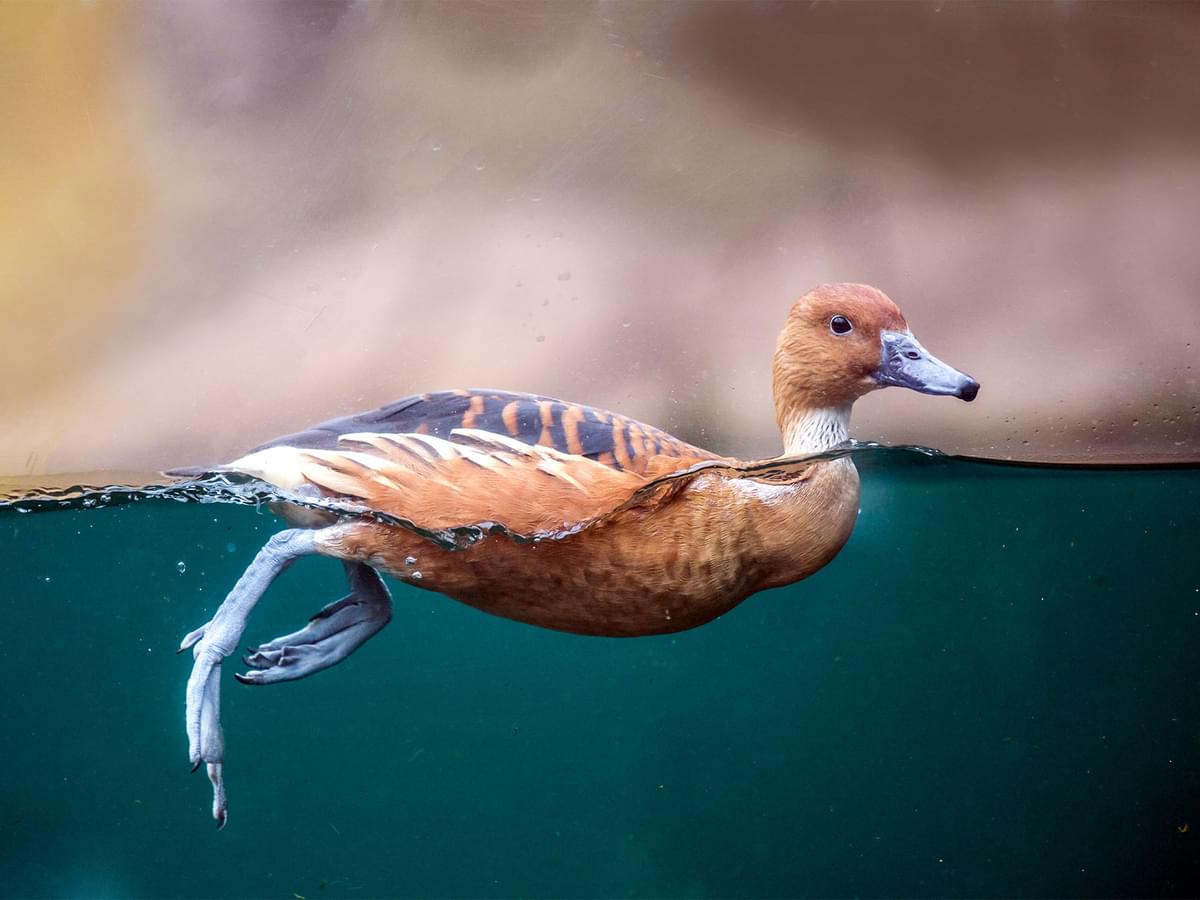Legs and Feet

When asked how a bird moves, your knee-jerk reaction might be to say they fly. However, most species will spend most of their lives on their feet, and those that don’t are probably paddling around on the water when not walking on the shore. Without legs and feet, birds would not be able to fly, find food, or survive across the diverse habitats of planet Earth.
Avian legs and feet have evolved into myriad shapes and sizes, some shaped for high-speed sprinting, others for deep diving, and some that are deadly weapons! Through the process of natural selection, their bones have fused, grown, shrunk, and sometimes even disappeared, all in a continuous process of adaptation.
This guide will walk you through the anatomy, function, and evolution of bird legs and feet. Read along with us to learn just how important and diverse avian hindlimbs can be.
The Anatomy of Bird Legs and Feet
Bone Structure and Strength
The avian leg is a specialized structure consisting of several bones, claws, associated muscles, ligaments, and tendons. The upper leg is typically feathered, while the exposed skin of the foot is covered in a scaly, keratinized skin called the podotheca.
Birds have fused and lengthened foot bones called the tarsometatarsi. What many people mistake for a backward-bending knee is, in fact, the bird’s ankle. This is easier to grasp once you understand that birds are digitigrade, meaning they walk on their toes, unlike how we walk on our feet and toes.
The major muscles of the leg are located around the hip and thigh, with smaller muscles along the tibiotarsus, which is the fused shin bone that articulates with the femur above and the tarsometatarsus below. Birds have two to four toes made up of smaller bones called phalanges. The toes are flexed and extended with strong tendons attached to muscles higher in the leg.
Variations Across Species
The bones of the bird leg vary greatly in size and length, depending on the habitat and foraging strategy of the species. Let’s take a look at a few birds with dramatically different legs and feet:
- Swifts have tiny legs useful only for clinging while nesting
- Stilts have extremely long legs for wading through water
- Birds of prey have powerful legs and feet for catching and carrying prey
- Galliformes (gamebirds) have robust legs for running at high speeds
- Swimming birds have relatively short legs with paddle-like feet

A pair of Barred Buttonquail. Galliformes (gamebirds) have robust legs for running at high speeds
Functional Adaptations of Legs and Feet
Prey Capture and Handling
Owls and diurnal raptors have powerful legs and feet with specialized talons for capturing and killing prey. Their legs are surprisingly long, which helps them reach their target more effectively. Some species also reach into vegetation, holes, crevices, or even snow to grab their prey.
Raptors need powerful leg muscles to drive their talons into their prey, and some large Eagles are said to have a grip strength of several hundred pounds per square inch! Nevertheless, the talons do not necessarily kill the prey outright, and research has shown that raptors also use their grip strength to suffocate their prey.
Perching Mechanism
Passerines and other perching birds have opposable hind toes to wrap around tree branches and other perches. This ability keeps them safe from ground predators and offers a commanding view of their habitat, even if it does look like a tricky balancing act.
Birds have a ratchet-like mechanism that locks the tendons in their digits for a more energy-efficient grip. Many species are also believed to use a flexing mechanism that closes the toes automatically when other joints in the leg are flexed. This allows them to grip their perch effortlessly with their body weight instead of squeezing it for hours each night.
Wading and Swimming
Waterbirds have highly specialized feet adapted for their aquatic lifestyle. Waders and shorebirds typically have long legs for walking in shallow water without the need to swim. Tall species like Flamingos and Avocets take this ‘leggy’ build to extremes.
Many birds are expert swimmers with short legs and webbed feet for fast propulsion. These birds may swim along the surface (e.g., Swans) or even swim at high speeds under the water (e.g., Anhingas).

A Greater Flamingo. Waders and shorebirds typically have long legs for walking in shallow water without the need to swim
Understanding Bird Foot Morphology
Foot Types and Their Uses
Bird feet can be categorized into various groups, each with their own form and function. Continue reading to learn about seven interesting avian toe arrangements and their uses.
- Anisodactyl - Nearly 90% of all birds have anisodactyl feet, with three unwebbed forward-facing digits and one rear toe (hallux). This arrangement is ideal for perching but also effective for walking and hopping. E.g., Songbirds
- Zygodactyl - This arrangement includes two forward-facing toes and two hind toes for gripping perches or even clinging to vertical surfaces. Some birds of prey use this powerful grip for grasping prey. E.g., Woodpeckers and Owls
- Heterodactyl - This foot type is only known from Trogons, a group of colorful forest birds. These grasping birds have two front and two rear digits, like the previous category. In this arrangement, however, the third and fourth toes face forward rather than the first and the fourth.
- Syndactyl - This is a relatively rare foot type with three forward-facing toes and one rear digit. It differs from the anisodactyl arrangement in having the inner two front toes partially fused for improved grip. E.g., Kingfishers
- Pamprodactyl - All four toes face forward for clinging and hanging upside-down. E.g., Mousebirds
- Palmate - This foot type has evolved for swimming but provides a good compromise for foraging on land. The three forward-facing digits are webbed, but the hind digit is not. E.g., Ducks
- Totipalmate - Four fully webbed toes for maximum swimming efficiency. E.g., Pelicans
Most birds have just one possible toe arrangement, although many species fall outside these categories because they can move their toes into different arrangements at will.
Claws and Spades
Claws are used for various actions, some universal and some highly specific. Most birds use their claws primarily for grip while walking and perching, although Raptors and Owls have sharp, curved talons for impaling prey.
Ground birds also dig for roots and bulbs, and some birds use their claws for preening their feathers.

A Snowy Owl. Most birds use their claws primarily for grip while walking and perching, although Raptors and Owls have sharp, curved talons for impaling prey
Locomotion and Movement
Walking and Running
Apart from some specialized birds, like Hummingbirds and Loons, most avians are highly mobile on their feet. Most ground birds use walking and running gaits, and large ratites like Ostriches and Emus can even top speeds of 30 miles per hour (48km/h)!
These specialized speedsters have long legs with particularly powerful muscles. They have also reduced their digits to just two or three forward-facing toes.
Hopping and Jumping
Hopping is a form of locomotion where birds move both legs simultaneously, either on the ground or along a branch. This is thought to save energy in birds with short legs and, therefore, short stride lengths.
Hopping is typical of tree-dwelling birds but is also seen in ground foragers like House Sparrows. Some birds, like Crows and Ravens, can walk and hop.
Swimming
Swimming birds have large feet with a wide surface area to propel them through the water, just like human divers wear flippers. The legs of specialized swimming birds like Loons are also situated far back on the body, which makes them very clumsy on land.

An Emu. Large ratites like Ostriches and Emus can even top speeds of 30 miles per hour (48km/h)!
The Evolution of Bird Legs and Feet
Evolutionary Pathways
Birds evolved from Therapods, a group of bipedal (two-legged) dinosaurs. These terrestrial animals had much more powerfully built legs and tails, as weight was not a problem. Structurally, the hindlimb of modern birds is similar to their ancestors, although many of the bones are now fused.
The fibula has shrunken in birds, likely to reduce weight. The tarsals (upper foot bones) of modern birds are fused with the tibia, and the distal tarsals are fused with the metatarsals (forefoot bones). Another key difference is the range of motion in the leg. The upper leg of a bird stays relatively static, with most of the movement occurring at the knee rather than the hip as it did in theropod dinosaurs.
Adaptations to Habitat and Diet
Since the evolution of birds over 150 million years ago, the size, shape, and characteristics of avian legs and feet have diversified greatly. The remarkable diversity of birds’ legs and feet we see today has been driven by necessity.
Different means of locomotion (e.g., swimming, climbing), different habitats, and different foraging strategies have shaped avian hind legs to suit about ten thousand surviving species, and they continue to adapt and evolve even as you read this article.

A Ruby Throated Hummingbird. Hindlimbs vary from massive and robust in Ostriches to delicate and twig-thin in some shorebirds and barely visible in Swifts and Hummingbirds
Summary
Bird legs and feet are true marvels of the animal world that support radically different means of locomotion in diverse habitats.
Hindlimbs vary from massive and robust in Ostriches to delicate and twig-thin in some shorebirds and barely visible in Swifts and Hummingbirds. However, each avian leg and foot has been shaped over millennia to suit the needs of its species.
Every bird is important, and so is their habitat. Why not get out there, get birding, and support your local nature reserves and conservation bodies? There’s always something we can do to help our feathered friends!



